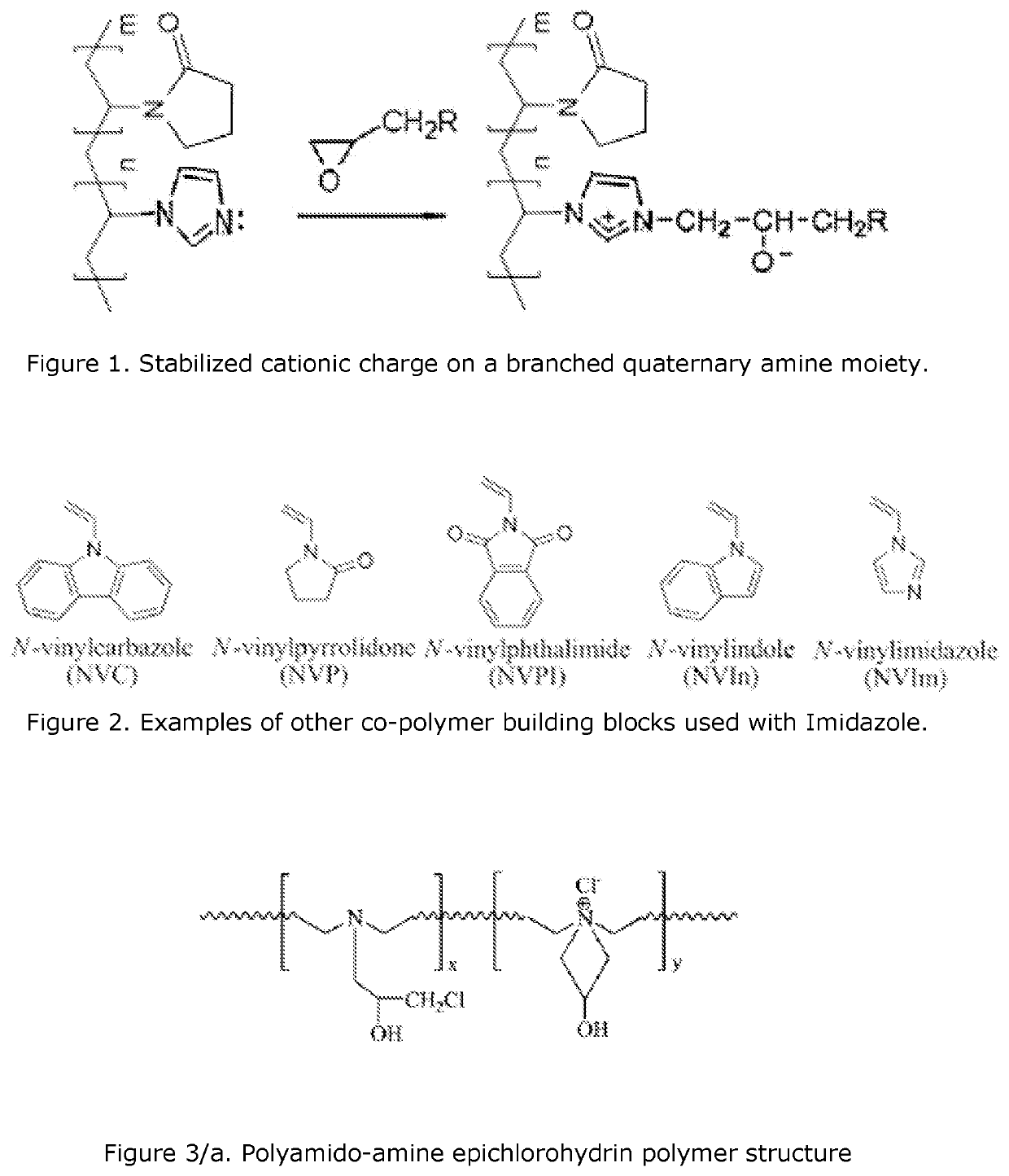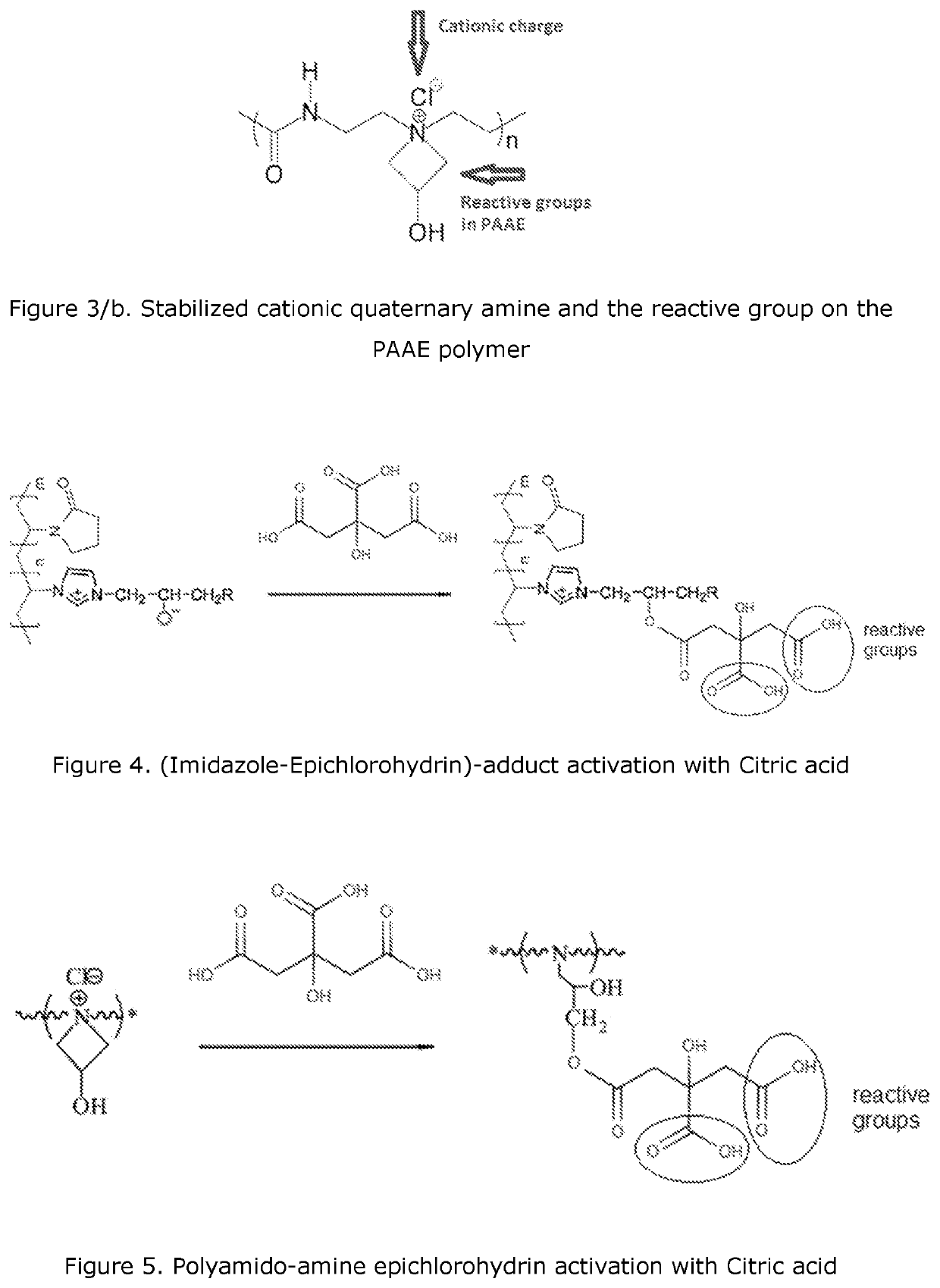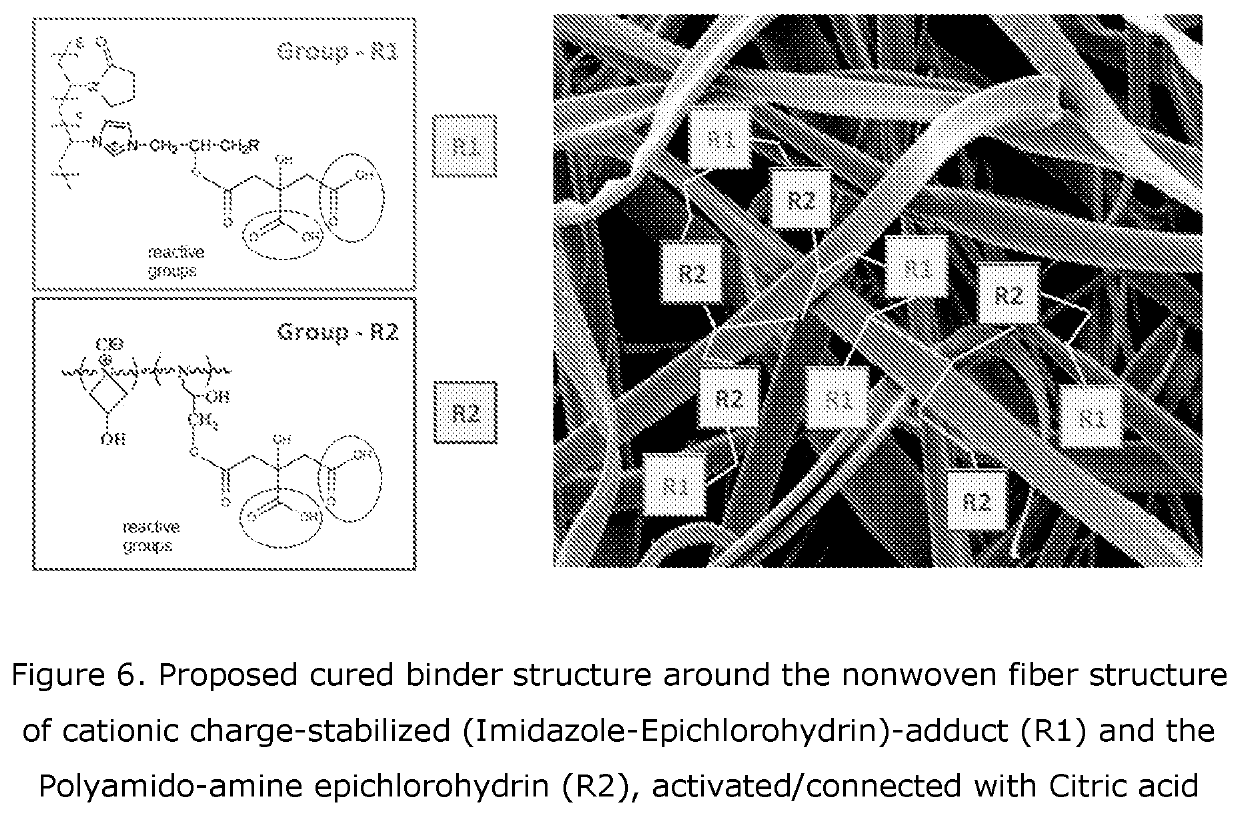Dye-capturing non-woven fabric and method for producing the same
- Summary
- Abstract
- Description
- Claims
- Application Information
AI Technical Summary
Benefits of technology
Problems solved by technology
Method used
Image
Examples
examples
[0071]Comparative Example 1 (C.Ex.1):
[0072]A standard non-woven substrate (66% International ECF Pulp, 34% viscose fibers (Danufil) 5 mm or 8 mm×0.95 dtex) was treated with glycidetrimethylammonium chloride (GMAC) in a conventional secondary chemistry treatment to obtain a GMAC-functionalised control sample.
[0073]Example 1 (Ex.1):
[0074]A similar standard non-woven substrate as used for Comparative Example 1 was inline functionalized to obtain a dye-capturing non-woven fabric according to an exemplary embodiment of the present invention, by applying a composition comprising:
[0075]80 L Sokalan HP66K (copolymer of vinylimidazole and vinylpyrrolidone)
[0076]130 L Kymene GHP20 (polyamido-amine epichlorohydrin)
[0077]6 kg citric acid
[0078]+786 L water to get 1000 L composition having a final pH of 3.9.
[0079]Example 2 (Ex.2):
[0080]The dye-capturing non-woven fabric of Example 1 was additionally treated with glycidetrimethylammonium chloride (GMAC) in a conventional secondary chemistry treatm...
PUM
 Login to View More
Login to View More Abstract
Description
Claims
Application Information
 Login to View More
Login to View More - R&D
- Intellectual Property
- Life Sciences
- Materials
- Tech Scout
- Unparalleled Data Quality
- Higher Quality Content
- 60% Fewer Hallucinations
Browse by: Latest US Patents, China's latest patents, Technical Efficacy Thesaurus, Application Domain, Technology Topic, Popular Technical Reports.
© 2025 PatSnap. All rights reserved.Legal|Privacy policy|Modern Slavery Act Transparency Statement|Sitemap|About US| Contact US: help@patsnap.com



